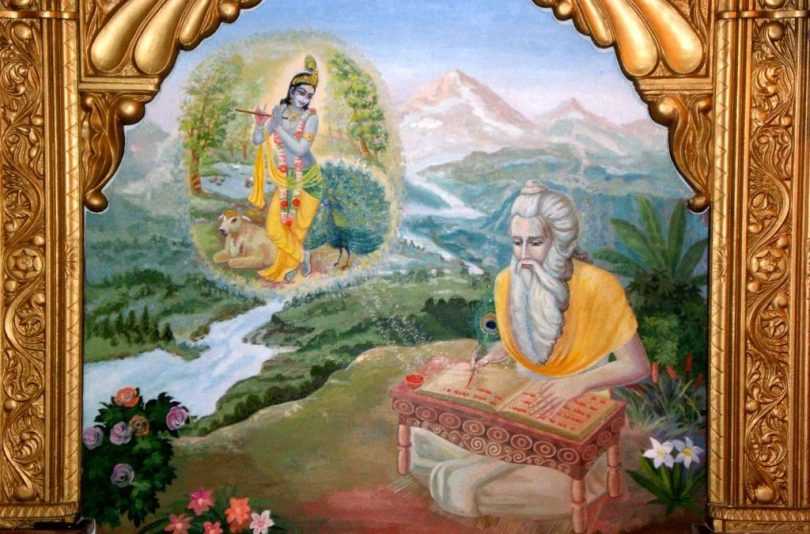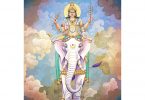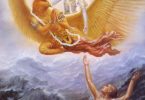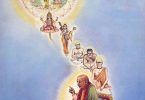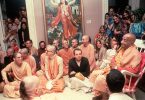Q. I’ve read information on Michael Cremo’s web site (Drutakarma Prabhu) where he calculates earth age based on SB Canto 3-Chapter 11. His estimation is about 2 billion years. Today, the scientifically studied data reveals an age of 4 billion or so. How should we approach the difference when challenged (other than the limited vision prone to make mistakes example)?
Answer by Romapada Swami & Drutakarma prabhu: I presented this question to Drutakarma Prabhu directly, who replied as follows:
I do not know exactly what he is quoting from my site. But in general, the position I take is that the Srimad Bhagavatam says that humans beings and all other forms of life were manifested in the Svayambhuva manvantara period, which takes place at the beginning of the kalpa, or day of Brahma.
The blessed King said to Sukadeva Gosvami: My dear lord, the demigods, demons, human beings, Nagas, beasts and birds were created during the reign of Svayambhuva Manu. You have spoken about this creation briefly [in the Third Canto]. Now I wish to know about it elaborately.
>>> Ref. VedaBase => SB 6.4.1-2
So from the third canto, we can tell that the beginning of the kalpa was about 2 billion solar years ago. But the earth would have existed before that, because at the beginning of the kalpa it was taken from the depths of the Garbha Ocean by Varaha.
Lord Boar penetrated the water with His hooves, which were like sharp arrows, and found the limits of the ocean, although it was unlimited. He saw the earth, the resting place for all living beings, lying as it was in the beginning of creation, and He personally lifted it.
PURPORT
The word rasayam is sometimes interpreted to mean Rasatala, the lowest planetary system, but that is not applicable in this connection, according to Visvanatha Cakravarti Thakura. The earth is seven times superior to the other planetary systems, namely Tala, Atala, Talatala, Vitala, Rasatala, Patala, etc.
Therefore the earth cannot be situated in the Rasatala planetary system. It is described in the Visnu-dharma:
patala-mulesvara-bhoga-samhatau
vinyasya padau prthivim ca bibhratah
yasyopamano na babhuva so ‘cyuto
mamastu mangalya-vivrddhaye harih
Therefore the Lord found the earth on the bottom of the Garbhodaka Ocean, where the planets rest during the devastation at the end of Brahma’s day.
>>> Ref. VedaBase => SB 3.13.30
So the earth is older than the beginning of the kalpa, older than 2 billion years.
When I give the figure of 2 billion years, I am talking about the apperance of life on earth. Actually, the oldest undisputed evidence for life on earth, according to modern paleontology, goes back to about that time (some say they can detect indirect chemical evidence for life somewhat earlier than 2 billion years). But scientists say that only the most simple single celled creatures were there, whereas the Srimad Bhagavatam says there were other kinds of life present in the Svayambhuva manvantara period. And there is some physical evidence for this basic idea, that advanced life has been present for longer than today’s scientists believe possible.
In considering these questions, we have to keep in mind the principles of Vedic epistemology, which tell us there are three kinds of evidence: pratyaksha (sense evidence), anumana (logical inference) and shabda (transcendental sound coming from a perfect source of knowledge). Modern science relies on pratyaksha and anumana. Scientists look at the world with their senses and then use the mind’s logic to make some conclusions about the age of the earth, the history of life, etc. But this process is imperfect because the senses are limited and imperfect and the mind we use for logic is also imperfect. It can make mistakes, become illusioned, or become the victim of cheating. As devotees, we do not rely on these imperfect methods. We rely on perfect knowledge as it comes down to us in shabda, transcendental sound. This sound is recorded in the Vedic literature, like the Srimad Bhagavatam, which can be properly understood only from spiritual authorities in the line of disciplic succession from the source of shabda, Krsna. So we accept this as our standard of knowledge. We do not need to prove it by pratyaksha and anumana. If shabda required proof from pratyaksha and anumana, then sense evidence and logic would be superior to shabda, and if that were true, then why study Bhagavatam at all? Why accept the spiritual authority of the great acharyas? So for ourselves, as devotees, we have no need to concern ourselves with lesser forms of evidence. Actually, we use shabda to judge pratyaksha and anumana. If there is sense evidence and logic that go along with the conclusions of shabda, then we can accept them and use them in our preaching. But if sense evidence and logic contradict shabda, then we can know they are mistaken.
I hope this helps.
Ys. Drutakarma Dasa

